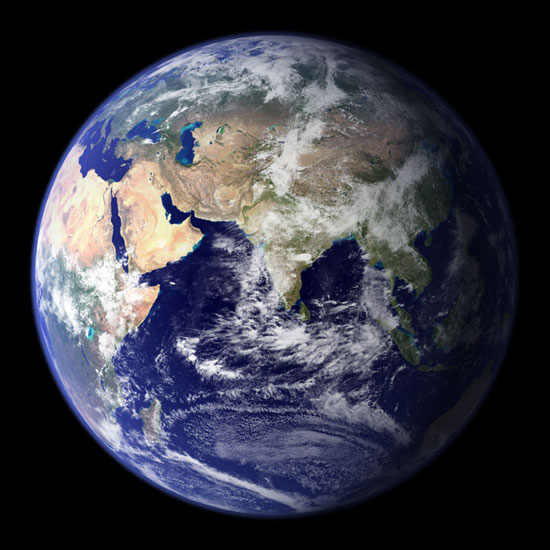Hang On! Earth's Surface Moving North

As you read this, the Earth's surface is shifting right underneath you, creeping very slowly toward the North Pole. Scientists say the shift is greater than they expected, but other than some minor effects on satellites, life will go on.
Researchers have found that the shift of water mass around the globe, combined with so-called post-glacial rebound, is shifting Earth's surface relative to its center of mass by 0.035 inches (0.88 millimeters) a year toward the North Pole.
Post-glacial rebound is the response of the solid Earth to the retreat of glaciers and the resulting loss of the hefty weight. As glaciers retreated at the end of the last Ice Age, the land under the ice began to rise and continues to do so. Therefore, models predicted, the solid crust at the surface should be moving northward, in relation to the planet’s center of mass.
Now there’s hard data to support the model’s prediction.
To calculate the changes, scientists combined gravity data from the NASA/German Aerospace Center Gravity Recovery and Climate Experiment (GRACE) satellites with measurements of global surface movements from GPS and a model developed by NASA’s Jet Propulsion Laboratory (JPL) that estimates the mass of Earth's ocean above any point on the ocean floor.
Study researcher Xiaoping Wu of JPL in Pasadena, Calif., thinks the shift of Earth's surface is largely due to the melted Laurentide ice sheet, which blanketed most of Canada and a part of the northern United States during the last Ice Age.
"The new estimate of shift is much larger than previous model estimates of 0.019 inches (0.48 millimeters) per year," Wu said. "The motion of the center moving upward is not going to affect life on Earth. The motion is only less than one millimeter a year, so it won't have any impact on life, but if it were something like one centimeter, then there would be a huge amount of changes," Wu said.
Get the world’s most fascinating discoveries delivered straight to your inbox.
While this movement will not have an impact on our day-to-day lives, it could impact spacecraft tracking and tell us more about how the Earth deforms under stress and the history of deglaciation.
"Satellites in space orbit around the center of mass record information from space and our corresponding instruments are located on the Earth's surface, so this movement may affect how we track spacecrafts," Wu said.
The research, published this month in the journal Nature Geoscience, was conducted by scientists from JPL, Delft University of Technology in the Netherlands, and the Netherlands Institute for Space Research.
Andrea Leontiou is a staff writer for OurAmazingPlanet.com, a sister site to LiveScience.
